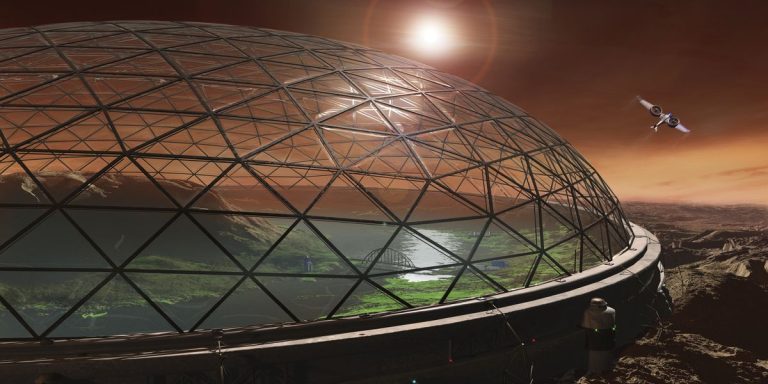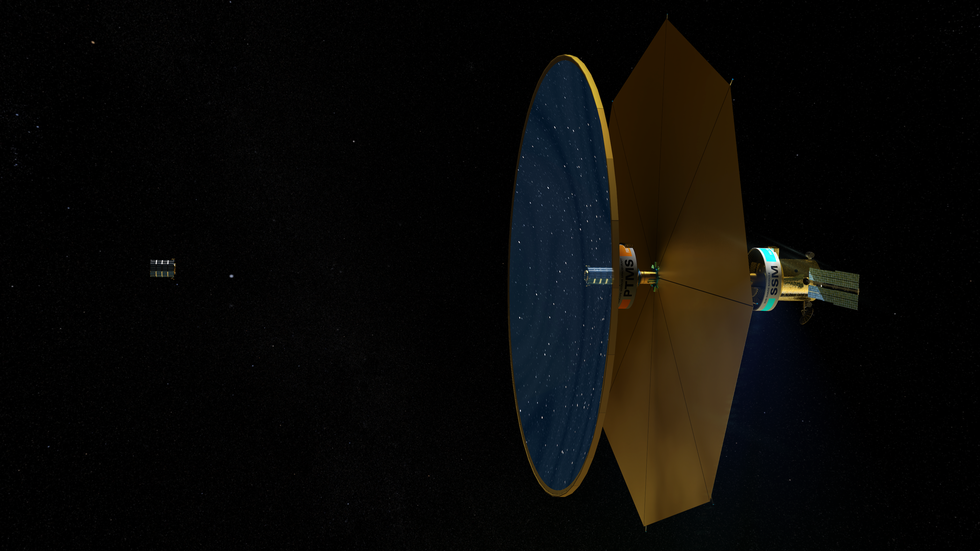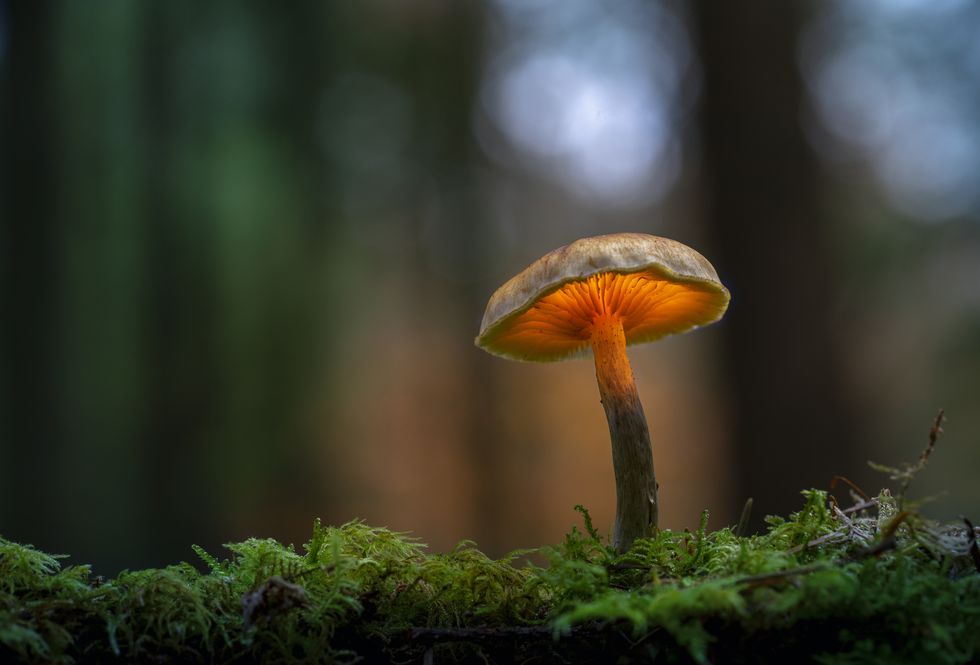What will the future of spaceflight look like? Will it be slow and incremental, a slow build on existing technology? Or will it be something more extreme and unexpected, using a technology or idea that seems so far-fetched that it might just be science fiction? That's the bet taken by NASA's Innovative Advanced Concepts (NIAC) program, a small group dedicated to “changing the possible.”
The NIAC program has a relatively small budget, only a few million dollars per year. It's just a drop in the bucket compared to all of NASA's spending (which itself represents a tiny fraction of a cent of the entire federal budget). But NIAC's purpose is not to build the next rocket or design the next mission. It's here to look 20, 30, or 40 years into the future, providing seed funding to anyone who has a crazy, but still plausible, idea that could radically change spaceflight as we know it.
If you want a peek into humanity's future in space, NIAC is your window. (Full disclosure: I've served on NIAC review committees for several years, and recently joined the external advisory board. So, if this sounds like I'm a big fan of the program, it's because I am.)
Liquid mirror telescope
As an example of the game-changing possibilities that NIAC is considering, take the FLUTE fluid telescope. The largest telescope ever launched into space is the James Webb, a massive array measuring 6.6 meters (21.7 feet) across. This sounds impressive (and it is), but ground-based telescopes dwarf it, with the largest spanning more than 30 meters (98.4 feet). With telescopes, you care more about the total surface area than the diameter. If placed on Earth, the James Webb would be a decent telescope, but it is not groundbreaking or world-class.
But space offers many advantages to astronomers. It saves you from light pollution and, more importantly, from the distorting effects of the Earth's atmosphere. That's why James Webb is able to deliver such amazing results. However, the telescope was also the most expensive scientific mission ever launched into space, because such a large mirror could not fit in existing rockets. The engineers behind James Webb have created a clever origami-like folding mechanism, something that has never been tried before with a telescope.
In astronomy, bigger is always better. Larger mirrors allow us to see farther into the distant universe, and they also provide better resolution for closer objects. If we want to go big, we don't have much of a choice…unless we get smart. The FLUTE design envisions a radically new type of telescope mirror, one made of liquid. The idea is to launch the observatory with tanks containing highly reflective compounds. Once in space, the telescope will release its support beams and begin rotating, allowing its own spin to stabilize the mirror-shaped liquid. Best of all, the only limit to the design is how much liquid you can pack on board. The reference design is for an impressive 50-meter (164-foot) telescope, which by comparison makes James Webb look like an amateur's toy.
Fungi-powered Martian habitats
If astronomy isn't your primary interest, the creative folks at NIAC Funds have some other ideas for you, like using fungi to build habitats on Mars. That's right: fungi. known as com. mycotectureThe project's goal is to solve one of the most fundamental problems facing any future Mars mission: building structures.
We take our building materials for granted. Cement, brick, wood, plaster, and drywall are all easily accessible and relatively cheap. When you want to build something on the ground, you just grab your tools, load up your materials, and get going. But on Mars there is no wood, no drywall, no gypsum, and no brick. Just lots of red dust and pavement-like desert floors, all at temperatures that are usually well below freezing. In the near term, NASA and other space agencies envision bringing all of our construction materials with us on the journey, increasing the cost and complexity of any manned mission to the Red Planet.
But what if we could build our habitats directly on Mars? Unfortunately, Martian soil isn't a great building material in itself, and it doesn't look like we'll have easy access to quarries. Enter NIAC's radical idea to use fungi instead. In this project, researchers are developing specialized strains of fungi that grow tight, tangled networks of materials. The hope is that we only need to bring basic foodstuffs; We can grow walls, roofs, and even plumbing pipes that will enable rapid expansion of the infrastructure needed to maintain a long-term presence on Mars.
Exploding an asteroid
Even if you just want to stay warm and cozy on planet Earth, NIAC is funding a project to help you — literally to save your life from a catastrophic asteroid impact. The plan, simply called PI, aims to avert disaster by blowing up an asteroid before it reaches our planet.
The Earth is constantly subjected to cosmic bombardment. Fortunately, most of the material that crosses our orbit is small, forming nothing more than a colorful meteor shower. However, about every year or so, a large enough rock impacts our atmosphere at 50-70,000 miles per hour. This releases enough pure kinetic energy to be the equivalent of a nuclear weapon, but this energy usually explodes safely in the atmosphere over a random patch of ocean. Then there are the large asteroids, such as the one that ended the reign of the dinosaurs about 66 million years ago. Those come every few million years, and it's been a long time since the last one.
If we want to survive as a species in the long term, we have to protect ourselves. One way is to settle on other worlds, which gives us fallback options. But even if we left Earth, we would still feel nostalgic for it, and might want to keep big space rocks from spoiling the place.
Recently, NASA demonstrated the DART mission, which propelled the asteroid's orbit. This could be useful for planetary defense, but only if we see the asteroid from a sufficient distance to be able to effectively deflect it. But with PI, the game plan is different. The idea is to send a swarm of small, high-speed impactors directly toward the incoming asteroid. Instead of trying to push it off course, the colliding objects burrow themselves into the asteroid's body, tearing it apart.
The resulting fragments will still be headed toward Earth, but our atmosphere is great at taking a punch. If we get enough small pieces, we can all celebrate as we enjoy the fireworks in the sky.
Ready meals
All of these ideas, along with dozens of other NIAC-funded projects, are only in their early stages of development, and have no guarantee of success. In fact, most of these projects will not succeed. But, if we want to make big swings, we will have to accept some errors, because when we hit, we… truly He hits! Take the Ingenuity Mars helicopter, which is currently setting records and laying the foundation for an entirely new category of planetary exploration; NIAC inspired this project.
Best of all, anyone can apply, from an established player in the space industry to a garage repairman. If you have an idea for the future, and a reasonable path to get there, NIAC wants to hear from you. It's the only way we can turn our science fiction dreams of the future into reality.

Paul M. Souter is a science teacher and theoretical cosmologist at the University of California Institute for Advanced Computational Science at Stony Brook University And author How to Die in Space: A Journey Through Dangerous Astrophysical Phenomena And Your Place in the Universe: Understanding Our Big, Chaotic Existence. Sutter is also a host of various science shows and is present on social media. Check him out Ask the astronaut Podcast So is he YouTube page.




